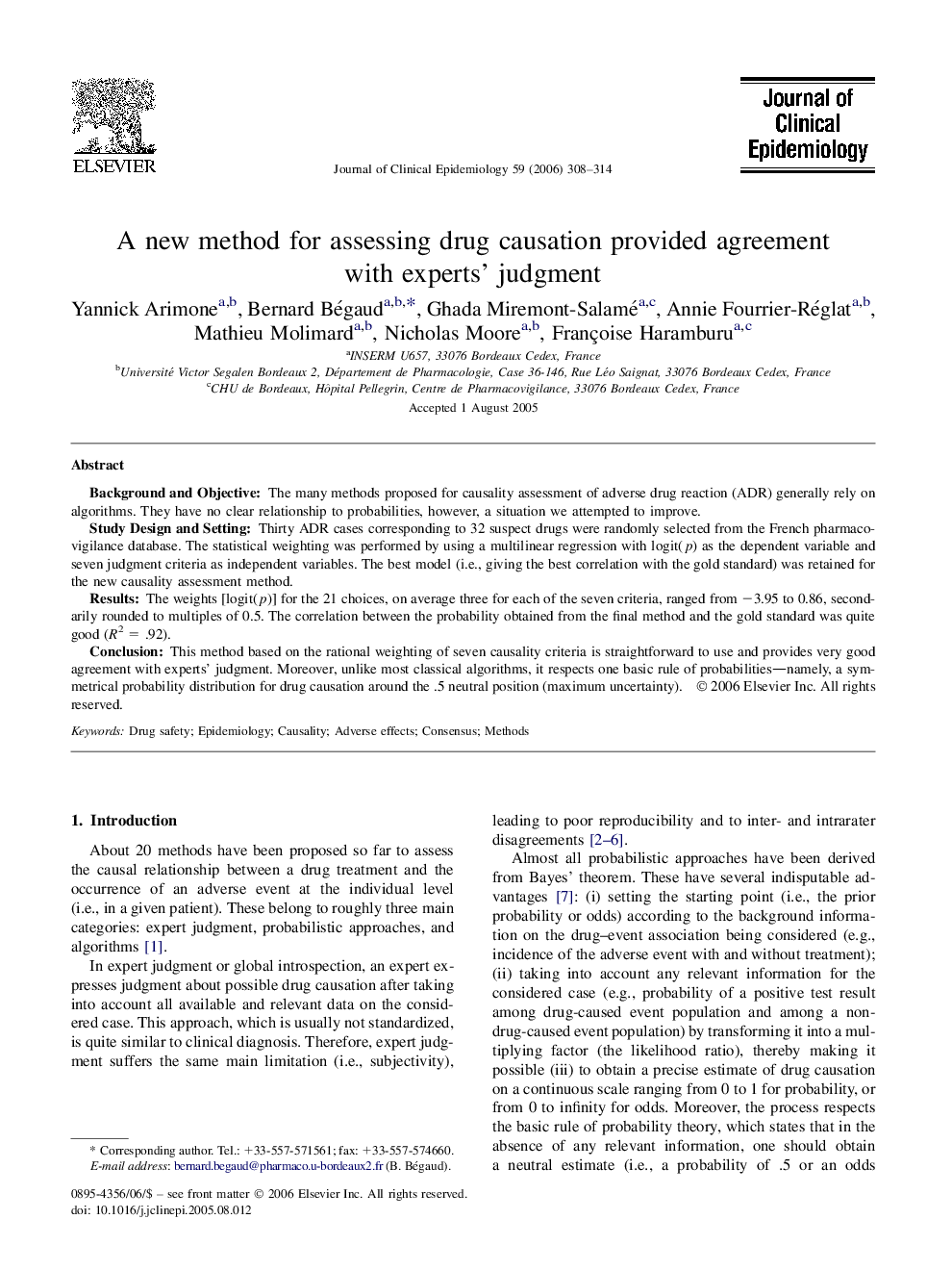| Article ID | Journal | Published Year | Pages | File Type |
|---|---|---|---|---|
| 1083598 | Journal of Clinical Epidemiology | 2006 | 7 Pages |
Background and ObjectiveThe many methods proposed for causality assessment of adverse drug reaction (ADR) generally rely on algorithms. They have no clear relationship to probabilities, however, a situation we attempted to improve.Study Design and SettingThirty ADR cases corresponding to 32 suspect drugs were randomly selected from the French pharmacovigilance database. The statistical weighting was performed by using a multilinear regression with logit(p) as the dependent variable and seven judgment criteria as independent variables. The best model (i.e., giving the best correlation with the gold standard) was retained for the new causality assessment method.ResultsThe weights [logit(p)] for the 21 choices, on average three for each of the seven criteria, ranged from −3.95 to 0.86, secondarily rounded to multiples of 0.5. The correlation between the probability obtained from the final method and the gold standard was quite good (R2 = .92).ConclusionThis method based on the rational weighting of seven causality criteria is straightforward to use and provides very good agreement with experts' judgment. Moreover, unlike most classical algorithms, it respects one basic rule of probabilities—namely, a symmetrical probability distribution for drug causation around the .5 neutral position (maximum uncertainty).
